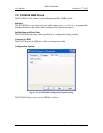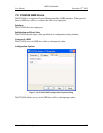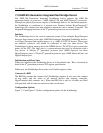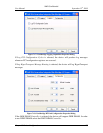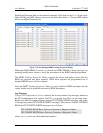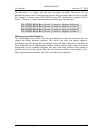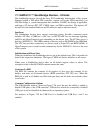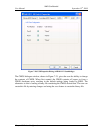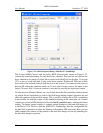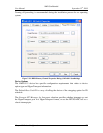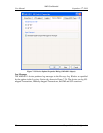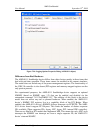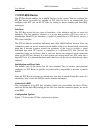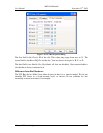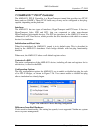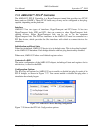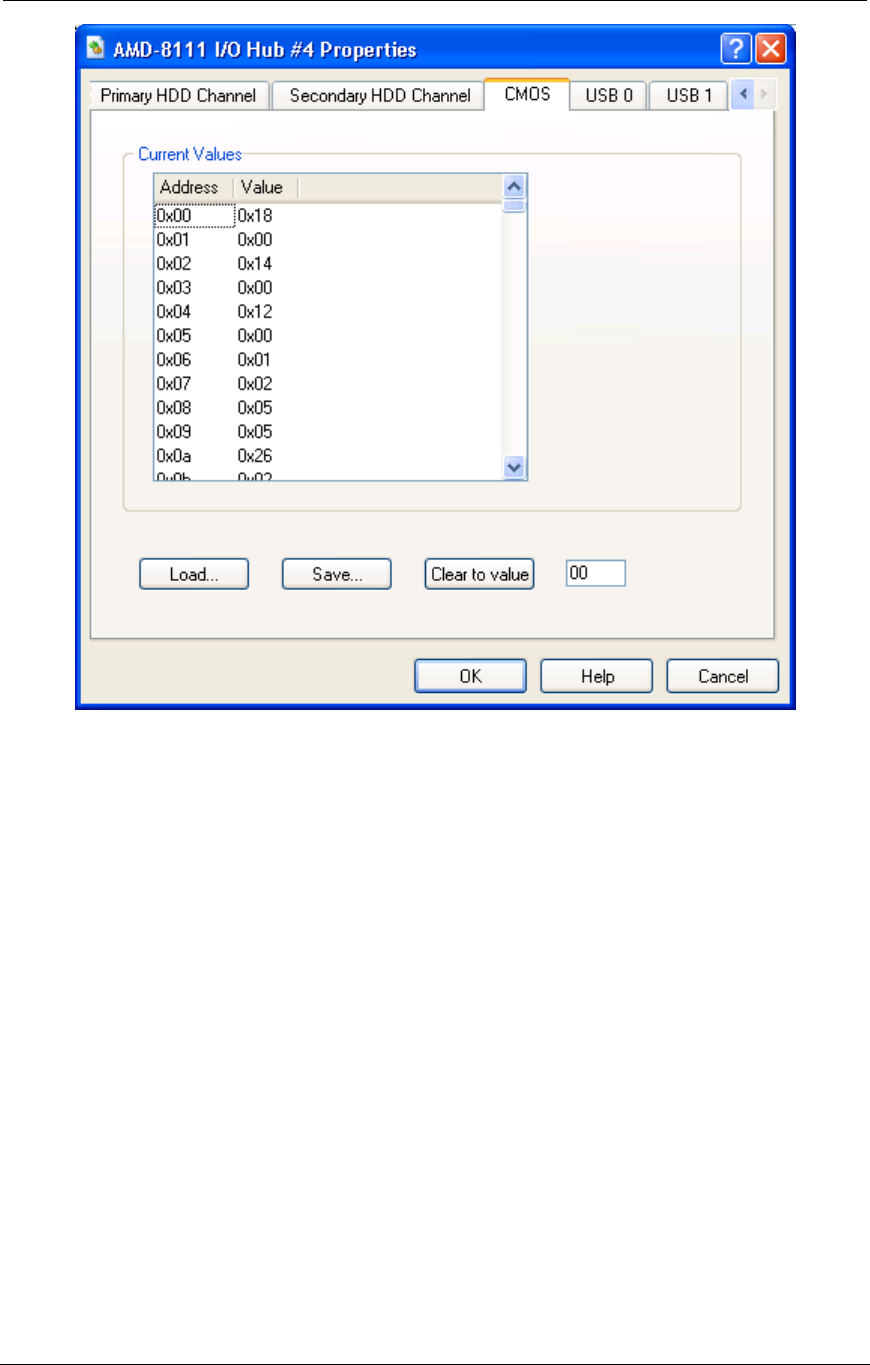
AMD Confidential
User Manual September 12
h
, 2008
88 Chapter 7: Device Configuration
Figure 7-21: CMOS Properties Dialog (AMD-8111™ Southbridge)
The Primary HDD Channel and Secondary HDD Channel tabs, shown in Figure 7-22,
contain the same information for each hard drive channel. The user has two options for
drive simulation: an image of a hard drive created with DiskTool (see Section 13 on page
157), or use of a real hard disk. Using a real drive requires Windows® 2000 and a drive
that is able to be isolated (locked) from the rest of the system. You cannot use the drive(s)
that the OS and/or the simulator reside on. To use a drive image, enter a file name in the
Image Filename field. A browse window is activated by pressing the right-most button.
All disk devices (Primary Master, etc.) by default have the disk journaling feature turned
on, which allows simulations to write to the disk image during normal operation and not
affect the contents of the real disk image. This is useful for being able to kill a simulation
in the middle, for multiple copies of the simulator running at the same time, etc. Journal
contents are saved in BSD checkpoint files but lost if you don't save a checkpoint before
exiting. To change journal settings or commit journal contents to the hard disk image, go
to the Device View Window, then the AMD-8111 Southbridge, then the configuration for
the hard disk in question on either the Primary or Secondary IDE controller. Here you can
either commit the contents of the journal to the hard-disk image or turn off journaling for
the hard disk image in question.



